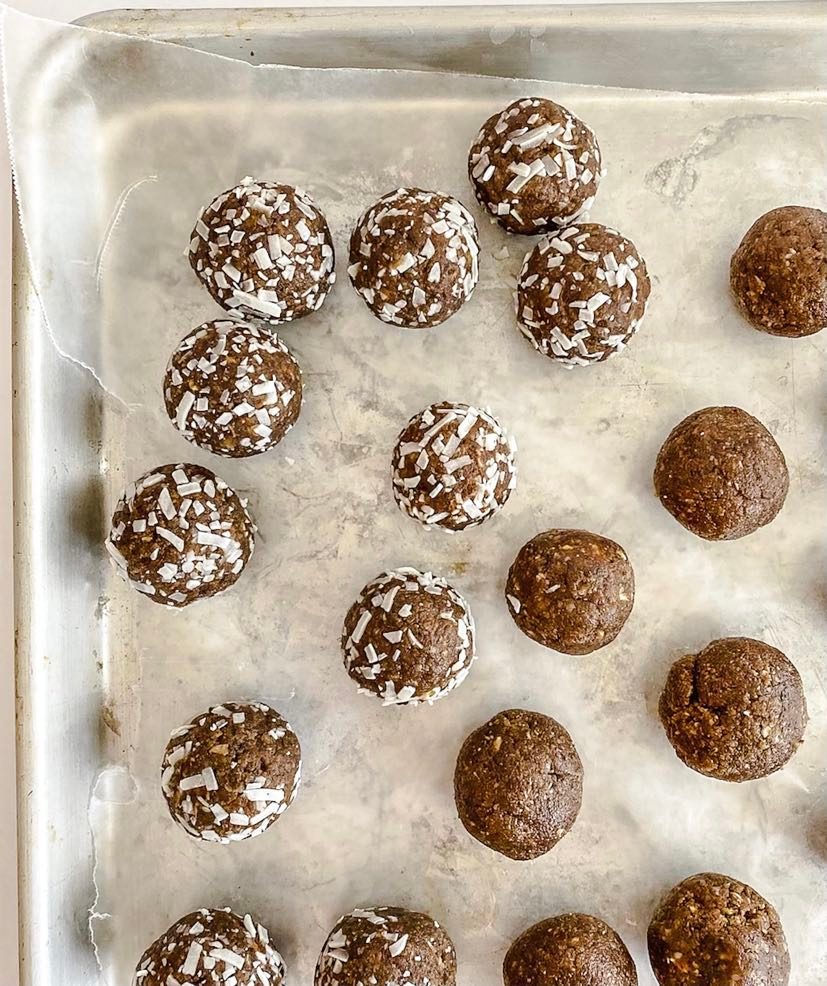The phrase meal planning can feel loaded. But if you don’t like broccoli or chicken breast, then you don’t have to include them! If you don’t like eating at home every day of the week, meal planning can include eating out! The point of meal planning is to help clear up brain space and energy throughout the week, not stress you out or cause guilt. When done through a non-diet lens, it can be an incredibly helpful tool to support intuitive eating, reduce stress around food, and create more space for satisfaction.
Here’s a guide to meal planning without dieting.
1. Start With Gentle Structure, Not Rigid Rules
Traditional diet-based plans tell you what to eat, when to eat, and how much to eat without considering your body’s needs or preferences. They also don’t account for your needs or preferences changing day to day! A non-diet approach to meal planning still values structure, but it’s flexible structure.
Instead of asking, “What’s the lowest-calorie option here?” try asking:
- How many meals do I have time and energy to make?
- Will it bother me to eat this multiple times?
- What sounds good and satisfying?
- What will give me energy for my day?
- What foods do I already have that I can use?
Gentle structure means planning for balance, but allowing room for life to happen. You’re not failing if you eat something off-plan, you’re just being human.
2. Build Meals Around Satisfaction and Variety
Satisfaction is a key principle of intuitive eating. When we eat satisfying meals, we’re more likely to feel nourished, grounded, and less likely to obsess over food later.
When planning meals for the week, aim for:
- A source of protein (chicken, tofu, beans, eggs, beef, pork, etc.)
- A carbohydrate (rice, pasta, bread, potatoes, quinoa, etc.)
- Some kind of fat (olive oil, avocado, cheese, dressings, nuts, etc.)
- A fruit or vegetable (fresh, frozen, roasted—whatever works!)
- And a flavor or texture boost (crunchy toppings, sauces, spices, herbs, citrus)
This formula is about building enough, not limiting what you can have.
3. Plan for Snacks and Moments of Hunger
Meal planning isn’t just about breakfast, lunch, and dinner. It’s also about what you’ll want between meals.
Keep a few favorite snacks on hand. You can have both nourishing and satisfying ones! Think: cheese and crackers, fruit with peanut butter, chips and guac, yogurt, trail mix, or even a warm cookie.
You don’t need to “earn” snacks. You just need to eat when you’re hungry.
4. Make It Work With Your Real Life
Some weeks you might want to cook. Some weeks you might rely on frozen meals, takeout, or assembling things from the fridge that sort of go together. That’s okay.
Try these low-pressure planning tips:
- Pick 2–3 dinner ideas you know you’ll enjoy and shop for those
- Batch cook one or two staples like rice, roasted veggies, or a protein
- Use theme nights (like Taco Tuesday, Pasta Thursday) for inspiration
- Leave blank space—your future self will thank you when plans change
Meal planning doesn’t have to be perfect to be helpful. Aim for what’s doable.
5. Give Yourself Permission to Change Course
Meal planning is a tool, not a test. If something sounds good when you’re planning but doesn’t appeal when the time comes, you have permission to pivot.
You’re not failing the plan. You’re listening to your body, which is the goal.
The best meal plans are the ones that leave space for flexibility, fullness, and freedom. Not every week will look the same—and that’s okay.
A Meal Plan That Serves You
We believe that food should support your life and not control it. A non-diet approach to meal planning helps you feel more prepared, less stressed, and more in tune with your needs, without falling back into restriction or overwhelm with food.
Whether you’re someone who loves a grocery list or someone who flies by the seat of your pantry, there’s a way to make meal planning work for you.
Need help finding that balance? Let’s talk. Schedule a free discovery call to see how we can support your relationship with food.
